Purchasing a used car can be a smart financial move, offering the potential to save money without sacrificing dependability. However, not all used vehicles are equal — some maintain their quality over time far better than others, excelling in reliability, safety, and fuel efficiency.
To guide buyers through the often overwhelming used car market, Consumer Reports has recently revealed its list of the 10 best used cars currently available, spanning various price ranges and vehicle categories.
These top selections are based on strong performance in road tests, higher-than-average reliability, and essential safety features such as electronic stability control. Whether you need a budget-conscious sedan or a gas-saving hybrid, there’s something suitable in this lineup for nearly every type of driver.
2016 Mazda6
The 2016 Mazda6 is a midsize sedan that combines style and driving fun with practical features. Known for its responsive four-cylinder engine and agile handling, it also impresses with a fuel economy rating of 32 mpg overall.
Inside, the Mazda6 has a well-designed cabin that feels upscale, although rear-seat space may feel a bit limited for taller passengers.
This model year brought improvements to the infotainment system and a reduction in cabin noise, enhancing the overall driving experience.
Optional safety technologies like forward collision warning and blind spot monitoring add to its appeal. The Mazda6 also earns high marks for reliability, with many owners experiencing few maintenance concerns even after several years of ownership.
The 2016 Mazda6 is widely praised by automotive journalists for its athletic handling, responsive steering, and strong braking, making it one of the most engaging midsize sedans to drive. It scores an 8.8 in performance, reflecting its capability on the road.
Under the hood, the Mazda6 features a 2.5-liter four-cylinder engine producing 184 horsepower. Buyers can choose between a six-speed manual transmission, which adds to the driving enjoyment, or a six-speed automatic.
The automatic version delivers impressive fuel economy, with an EPA estimate of 26 mpg in the city and 38 mpg on the highway. Models with the Grand Touring trim and Technology package improve efficiency further to 28/40 mpg, thanks to aerodynamic enhancements and Mazda’s regenerative braking system.
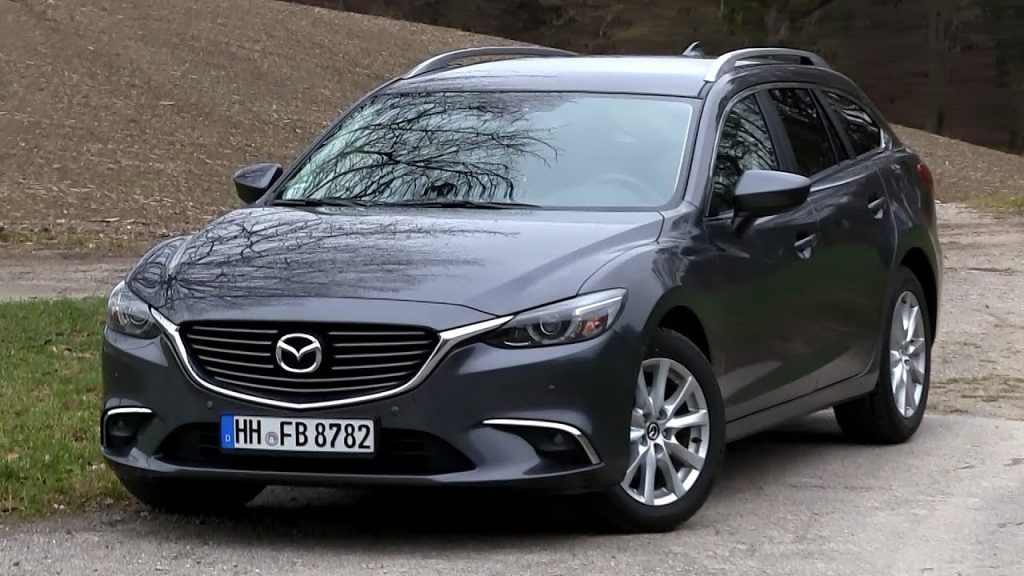
While some critics note the absence of turbocharged or V6 engine options, most agree that the four-cylinder engine provides sufficient power for daily driving in both city and highway settings.
The automatic transmission shifts smoothly and quickly, rivaling some dual-clutch systems, while the manual transmission offers short, precise throws and a predictable clutch, adding to the driving fun.
Test drivers consistently commend the Mazda6 for its nimble handling and communicative steering, combined with powerful brakes that inspire confidence.
However, the ride quality tends to be firmer than many competitors, especially on versions equipped with 19-inch wheels, which might not appeal to those seeking a softer ride. Overall, the Mazda6 stands out in its class as a midsize sedan that balances spirited performance with solid fuel efficiency and engaging driving dynamics.
2018 Toyota Corolla
Reliable and spacious, the 2018 Toyota Corolla is a compact car that delivers a smooth and comfortable ride along with impressive fuel economy, also averaging 32 mpg overall.
Its roomy rear seat and intuitive controls make it a practical pick for everyday use. For those seeking a bit of flair, the SE and XSE trims offer a sportier design and feel.

Starting in 2017, all Corolla models came standard with Toyota’s TSS-P safety suite, which includes forward collision warning, automatic emergency braking, and lane departure warning.
This makes the 2018 version especially valuable. Thanks to Toyota’s well-established reputation for durability, properly maintained Corollas can often exceed 200,000 miles with routine care.
2016 Honda CR-V
The 2016 Honda CR-V stands out by blending practicality, fuel efficiency, and renowned reliability. Powered by a 2.4-liter engine coupled with a continuously variable transmission (CVT), it delivers solid performance and achieves an overall fuel economy of 24 mpg.
A refresh in 2015 enhanced its crash protection, handling, and exterior styling. While advanced safety technologies are available, they are primarily reserved for the top-tier Touring trim. With its spacious cargo area, the CR-V is particularly well-suited for families or anyone who frequently carries a lot of gear.
Honda introduces a new Special Edition (SE) trim featuring 17-inch wheels, positioned just above the base LX trim. As the company prepared for the redesigned 2017 model, changes for the 2016 CR-V remained minimal and straightforward.
The CR-V occupies a middle position within Honda’s SUV lineup, falling between the smaller HR-V and the larger Pilot in terms of both size and price.
For 2016, the Honda CR-V is powered by a 2.4-liter inline-4 engine producing 185 horsepower and 181 lb-ft of torque, paired with a continuously variable transmission (CVT).
This compact SUV delivers fuel economy ratings of 25 mpg city and 31 mpg highway with all-wheel drive, and slightly better at 26 mpg city and 32 mpg highway for front-wheel drive models.
The CR-V offers a generous list of optional features, including a power tailgate, power moonroof, Smart Entry system (which allows door unlocking without using the key fob), leather-trimmed seats, a 10-way power-adjustable driver’s seat, push-button start, 7-inch touchscreen display, 18-inch wheels, and dual-zone climate control.
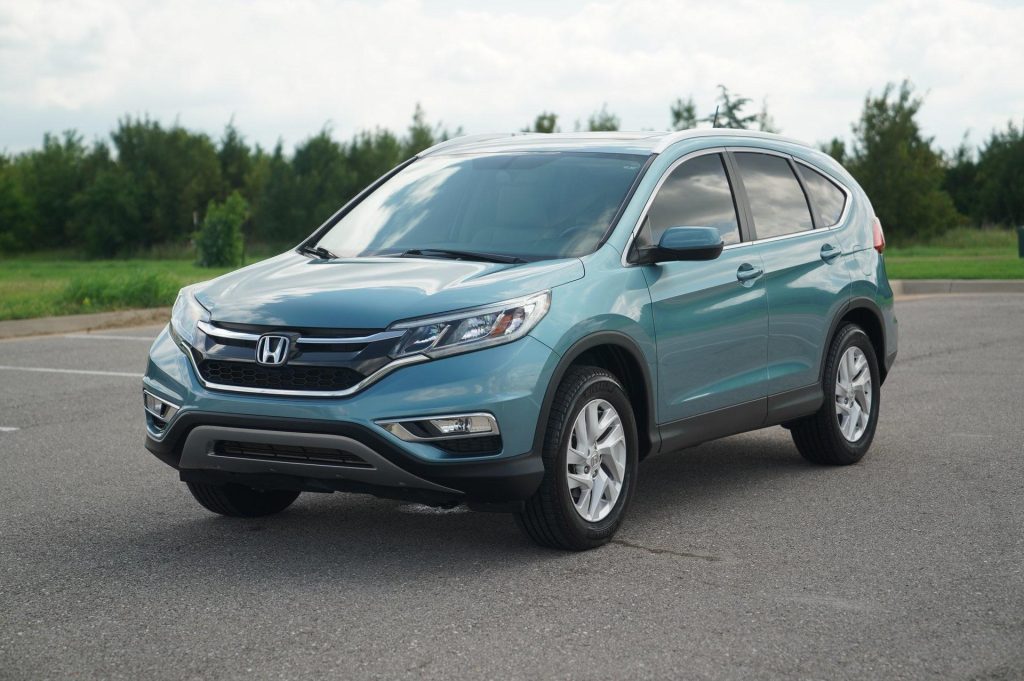
Additional options include a 7-speaker 328-watt sound system, satellite radio, navigation, LED daytime running lights, rearview camera, Honda Lane Watch (a rear-facing camera mounted on the passenger side-view mirror), and Pandora compatibility.
The 2016 model also offers a variety of accessories such as rooftop attachments for skis, snowboards, surfboards, bikes, and kayaks, backup sensors, and a remote engine start system.
It achieved “Good” ratings across all crash tests—including small overlap front, moderate overlap front, side, roof strength, and head restraints and seats—and a “Superior” rating in the front crash prevention evaluation.
The CR-V demonstrated excellent automatic braking capabilities by avoiding a 12 mph collision and reducing the speed of a 25 mph collision by 21 mph with the available system.
For similar performance, buyers should select the optional Collision Mitigation Braking system, which is part of the Honda Sensing suite of driver-assist technologies.
This suite also includes Lane Departure Warning, Lane Keeping Assist, adaptive cruise control, and Forward Collision Warning. The NHTSA gave the CR-V a perfect five-star overall safety rating.
In our initial test of the refreshed 2015 CR-V AWD, we praised its increased power and acceleration, the smooth operation of the CVT, and the enhanced ride, handling, and braking performance.
It’s commendable that Honda invested significant resources into a mid-cycle refresh despite the CR-V’s status as the top-selling vehicle in its class and the best-selling entry crossover of all time.
We noted that its excellent value, engineering, and safety features, combined with its cheerful performance, earned it the top honor. The CR-V was described as a careful rework of a best-seller, executed with Honda’s characteristic thoughtfulness.
While the CR-V may not be the most exciting to drive, the most fuel-efficient, or the most feature-packed in its segment, few five-seat crossovers excel at so many aspects as this Honda does.
It’s not without flaws, such as the lack of a volume knob and an outdated navigation system, but even in the latter half of its lifecycle, the CR-V remains a solid choice for most buyers, according to our year-long review.
2019 Toyota Camry Hybrid
Delivering an impressive 52 mpg overall in the LE trim, the 2019 Toyota Camry Hybrid offers exceptional fuel efficiency. It provides a smooth and composed ride, a roomy interior, and a suite of standard advanced safety features, including forward collision warning and adaptive cruise control.

In later models, Apple CarPlay was introduced, increasing user convenience. The Camry Hybrid’s battery has also shown strong durability, with many owners reporting little to no performance decline even after accumulating high mileage.
2021 Kia Sportage
The 2021 Kia Sportage is a compact SUV that combines sporty design with refined comfort. Inside, it offers supportive seating and balanced handling.
A 2020 update brought a larger infotainment screen and introduced advanced safety features such as automatic emergency braking and lane-keeping assist.
While the base model’s fuel economy is average for the class, the Sportage still delivers excellent value. Its comprehensive warranty coverage also makes it a compelling option for buyers seeking long-term confidence and peace of mind.
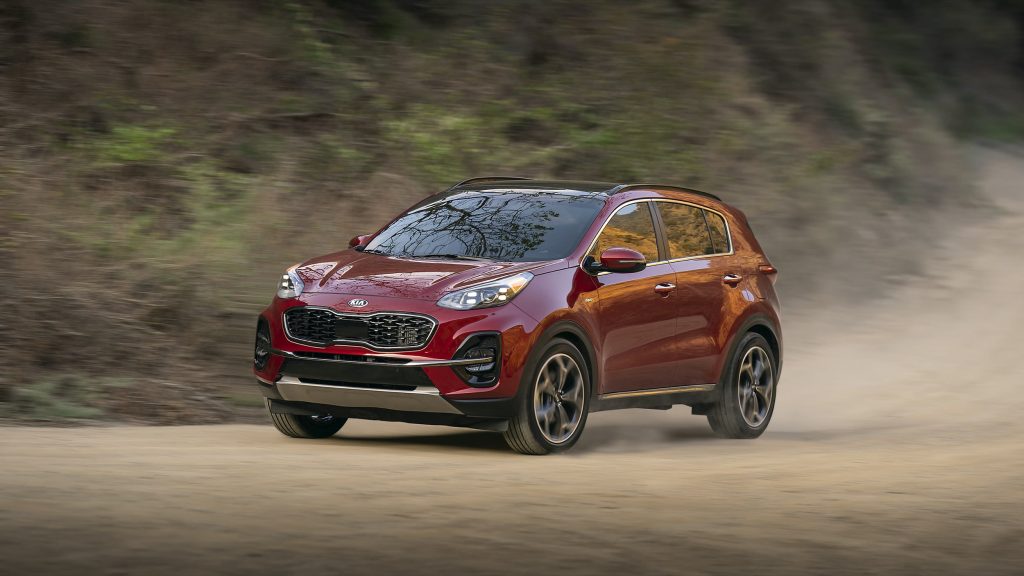
The 2021 Kia Sportage is a small SUV positioned between Kia’s three-row Sorento and the compact Seltos.
Sharing many components with its corporate sibling, the Hyundai Tucson, the Sportage offers a generous array of features at an affordable price, including available all-wheel drive and a striking design that helps it stand out in a crowded segment.
However, it ranks lower on our list than top competitors such as the Honda CR-V, Mazda CX-5, and Subaru Forester.
The current generation of the Sportage debuted in 2017 and received various updates in 2020, meaning the 2021 model sees minimal changes.
Notably, the S Sunroof and Premium packages have been discontinued and replaced by the Nightfall Edition and Nightfall Edition Premium packages.
On the downside, the Sportage has lower fuel economy compared to some top rivals, relatively modest cargo capacity, and slow acceleration.
Worst Used Cars To Avoid in 2025
Automakers have gotten exceptionally good at designing vehicles that effectively meet the needs of today’s drivers, which in turn has resulted in a wide selection of appealing options for used car buyers.
Still, there remains a noticeable gap between the top-performing models and those that fall short. If you’re in the market for a used vehicle, it’s important to know which models to steer clear of.
2021 Mitsubishi Outlander
Every 2021 Outlander SUV comes equipped with a plug-in hybrid powertrain. While plug-in hybrids are typically known for delivering excellent fuel economy, the Outlander falls short compared to other vehicles in its class when it comes to efficiency.
Performance is another weak point, as the Outlander’s acceleration feels underwhelming. Despite being fitted with a soft suspension, the ride quality is compromised by harsh road surfaces that can leave passengers feeling unsettled.
Inside the cabin, the experience doesn’t get much better—seating is firm, materials feel cheap, and the overall design appears outdated.
However, the Outlander does offer a few redeeming qualities. It provides generous cargo space, offering 30.4 cubic feet behind the rear seats, and its low cost of ownership makes it an appealing option for budget-conscious buyers.
The 2021 Mitsubishi Outlander Sport offers a reasonable amount of cargo space and an easy-to-use infotainment system, but these positives don’t fully compensate for its slow acceleration, cumbersome handling, and lackluster cabin quality.
The SUV features a reasonably spacious interior, yet its ride and handling leave much to be desired. Fuel economy is poor compared to competitors, and acceleration is weak.
Inside, the cabin materials feel cheap, further detracting from the overall experience. For 2021, Mitsubishi introduced more standard driver-assistance features and debuted the new LE trim.
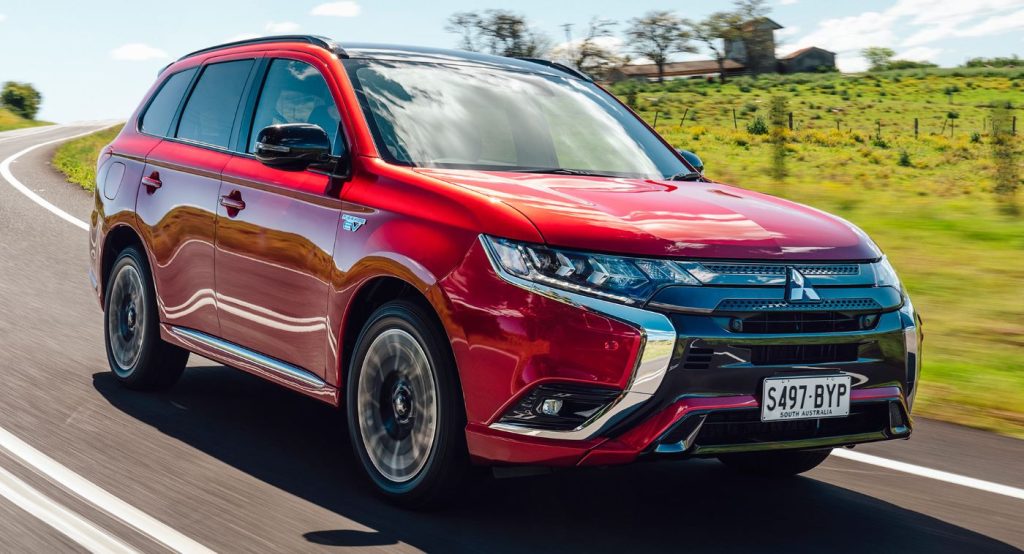
The Outlander Sport seats five passengers and delivers fuel economy ranging from 23 to 24 mpg in the city and 28 to 30 mpg on the highway, depending on drivetrain and engine choice. It is available with front-wheel drive or all-wheel drive, and its engine power ranges between 148 and 168 horsepower.
The Outlander Sport earned a 6.7 out of 10 overall score based on evaluations of 72 data points from various sources. It ranks lower than many rivals, including the 2021 Hyundai Kona, Kia Soul, Mazda CX-30, Buick Encore GX, and Kia Seltos.
The vehicle scores relatively low in performance (3.8/10) and interior quality (5.3/10), but fares better in safety (9.2/10) and ownership costs (7.8/10). J.D. Power gives it a quality and reliability rating of 86.
When considering a used subcompact SUV, the 2021 Outlander Sport is generally not recommended. Despite offering two engine options, neither delivers particularly efficient fuel consumption or brisk acceleration.
On the road, the Outlander Sport feels heavier and less agile than expected for its size, with a suspension that contributes to an unsettled ride.
The interior appears outdated and uses inexpensive materials, although passenger and cargo space are adequate. Better and more refined alternatives in the class include the 2021 Mazda CX-30, Hyundai Kona, and Kia Seltos.
The average asking price for a used 2021 Mitsubishi Outlander Sport is approximately $16,310, with prices ranging from about $14,892 to $19,148, depending on condition, mileage, features, and location.
Compared to the 2020 model, the 2021 Outlander Sport adds several standard driver-assistance features such as forward collision warning and lane-departure warning, along with the introduction of the LE trim.
Over recent years, notable updates include the addition of a 7-inch touchscreen and Apple CarPlay/Android Auto in 2018, the replacement of the SEL trim by the GT and the discontinuation of leather upholstery in 2019 along with new safety features, an available 8-inch touchscreen and removal of the manual transmission in 2020, and lastly, the enhanced safety features and new trim level for 2021.
2020 Dodge Journey
The 2020 Dodge Journey delivers a smooth ride, which can be a strong selling point for a family-oriented vehicle. It also boasts low ownership costs, making it a potentially attractive option for budget-conscious buyers.
However, this model ranks last in the 2020 affordable midsize SUV category and falls short in several key areas. Its engine lacks power, and the overall handling is unimpressive.
Inside, the cabin is underwhelming, dominated by low-quality plastics that diminish the overall experience. On top of that, the Journey has a very modest towing capacity, rated at only 1,000 pounds when properly equipped.
The most significant drawback is its near-total lack of advanced driver-assistance features. Aside from a rearview camera and rear parking sensors, the Journey offers no modern safety tech—an unfortunate omission for a vehicle often used for transporting families.
After more than a decade on the U.S. market, the Dodge Journey continues largely unchanged, with very few updates during that time. This puts it noticeably behind more modern midsize SUV rivals, but it also means the Journey demands a lower investment, making it attractive to budget-conscious buyers.
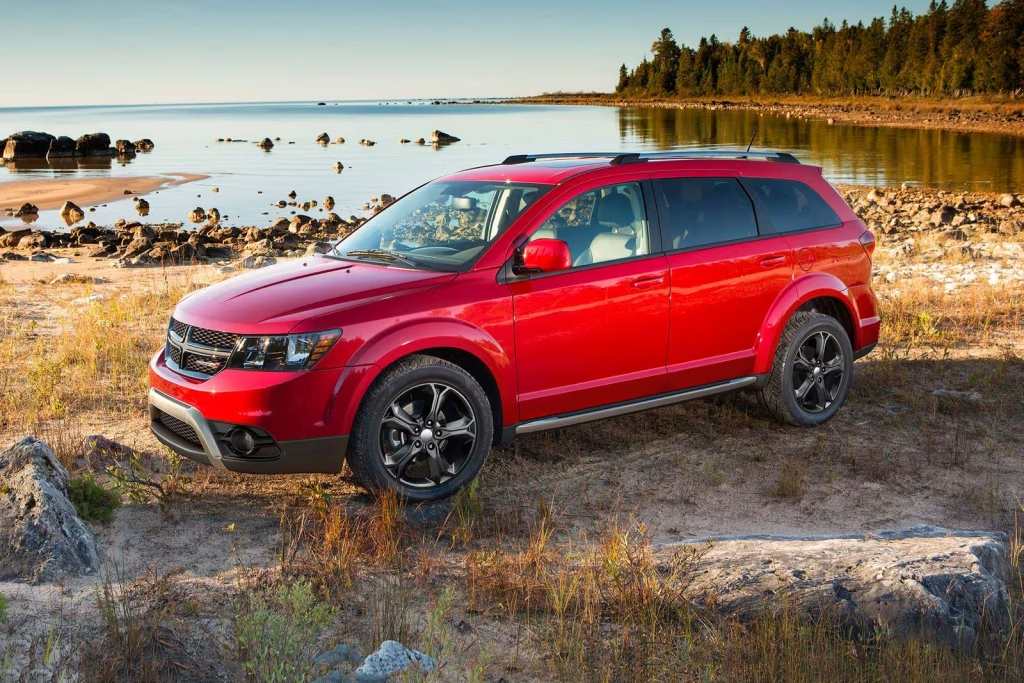
However, those seeking value may be disappointed by the absence of smartphone integration and advanced safety features such as blind spot monitoring. Where the Journey remains competitive is in passenger space and affordability, but this advantage is offset by poor cargo capacity and subpar fuel economy.
Compared to highly capable competitors like the Kia Sorento and Honda Pilot, the Dodge Journey lacks the appeal necessary to thrive in the new decade, especially since it now only offers a relatively weak 173-horsepower four-cylinder engine. Regarding pricing, the 2020 Journey simplified its trim and equipment levels, making shopping easier.
The SE Value continues as the base model with a starting MSRP of $23,495, while the only upgrade available is the Crossroad trim, priced at $28,595. All-wheel drive is no longer offered, so these trims represent the full range of options.
Although there are still several available packages, the Dodge Journey remains one of the most affordable SUVs on the market. These prices do not include tax, registration, licensing, or Dodge’s $1,495 destination fee.
When it comes to handling and driving impressions, very few vehicles age gracefully, with most receiving midlife refreshes just a few years into production. The Journey is now over ten years old and feels its age clearly. It handles poorly, described as feeling like “a rickety old man on roller skates” while driving.
The steering is imprecise and uncommunicative, with terrible on-center feel. Combined with the SUV’s considerable weight, it certainly isn’t built to take corners quickly. At low speeds or in parking lots, the Journey feels more manageable.
The brakes behave similarly to the steering: effective at low speeds but struggling to maintain traction at higher speeds. Body roll is significant, and the vehicle simply does not grip the road well enough to feel secure.
Given these shortcomings, perhaps it is fortunate that the Journey only comes with the modest four-cylinder engine. While it doesn’t feel as inadequate at low city speeds, accelerating on highways produces a harrowing experience. The seats provide no relief, either, as the ride comfort is mediocre at best and often uncomfortable.
As for the verdict, although some say “the journey is more important than the destination,” that phrase doesn’t apply to the Dodge Journey. Reflecting on a time when Oprah’s favorite things might have included this SUV, it is now well past its prime.
Over more than ten years, only minimal updates have been made to keep it relevant. Against ultra-modern crossovers like the Honda Pilot or Toyota Highlander, the Dodge simply can’t compete.
While the Journey offers plenty of passenger space, the low-quality materials and poor ride quality mean that comfort is lacking.
Furthermore, the standard trunk space is abysmal, making the SUV a poor choice as a family-focused daily driver. Though it boasts a low base price, many rivals ask only a few thousand dollars more and provide significantly better value.
The Journey lacks smartphone integration, onboard Wi-Fi, and meaningful advanced driver-assistance features. Coupled with an almost antique engine, it fails to present a compelling value proposition. Therefore, no, the Dodge Journey is not a good car.
When deciding which Dodge Journey model to buy, the choice is essentially between the more economical base trim and the better-equipped option.
However, given how bare-bones the SE Value is, even with the Popular Equipment Group, it’s hard to justify the purchase based on what you get. The automatic climate control, six-way power front seats, and larger infotainment display on the Crossroad trim are difficult to pass up.
You may also want the Popular Equipment Group for navigation and heated front seats, but if you want to keep your final price under $30,000, you can probably do without it—especially since rear park assist is now standard on all trims.
2019 Buick Cascada
The Buick Cascada convertible had a short-lived run, debuting in 2016 and ending production after the 2019 model year.
The Cascada earns points for its wide array of standard features and low ownership costs, which can make it an appealing option for budget-minded buyers. It also delivers a smooth ride that cushions passengers from uneven road surfaces, and it holds a strong predicted reliability rating.
However, these strengths are overshadowed by several notable shortcomings. The Cascada lags behind competitors in fuel efficiency and doesn’t handle with the same agility.
The seats are uncomfortably firm, and the car lacks modern tech conveniences like Apple CarPlay and Android Auto — features that are now expected in this segment. The lack of significant updates, combined with the Cascada’s below-average performance within its segment, doesn’t bode well for its future.
With Opel confirming the end of the European model in 2019, it’s widely expected that the Buick version will also be discontinued. So, if you have a particular fondness for this aging convertible, now might be your last chance to buy one new.
The 2019 Buick Cascada is relatively affordable for a luxury convertible. The base 1SV model starts at $33,995, excluding taxes, licensing fees, and a $925 destination charge. The Premium trim offers a few additional safety features but not much else, and its $36,995 price might feel steep for what you get.
For just $1,000 more, the Sport Touring trim is available, though it mainly provides cosmetic enhancements. Even so, at $37,995, it still qualifies as inexpensive in the luxury convertible segment.
As a cruising convertible, the Buick Cascada delivers an acceptable experience, though it leaves much room for improvement.
The chassis is quite stiff, even without the added structural support of a fixed roof. Unfortunately, this stiffness allows even minor road imperfections to be felt throughout the cabin.
This isn’t unusual for compact convertibles, but better tuning of the suspension would reduce the interference. The vehicle’s significant weight adds to its lack of finesse, making it feel heavy and clunky over bumps and uneven surfaces.
In a class of vehicles designed to inspire confidence on the road, the Cascada falls short. The HiPer Strut front suspension allows for sharp and responsive steering input, but the light steering feel and lack of feedback make it hard to accurately control.
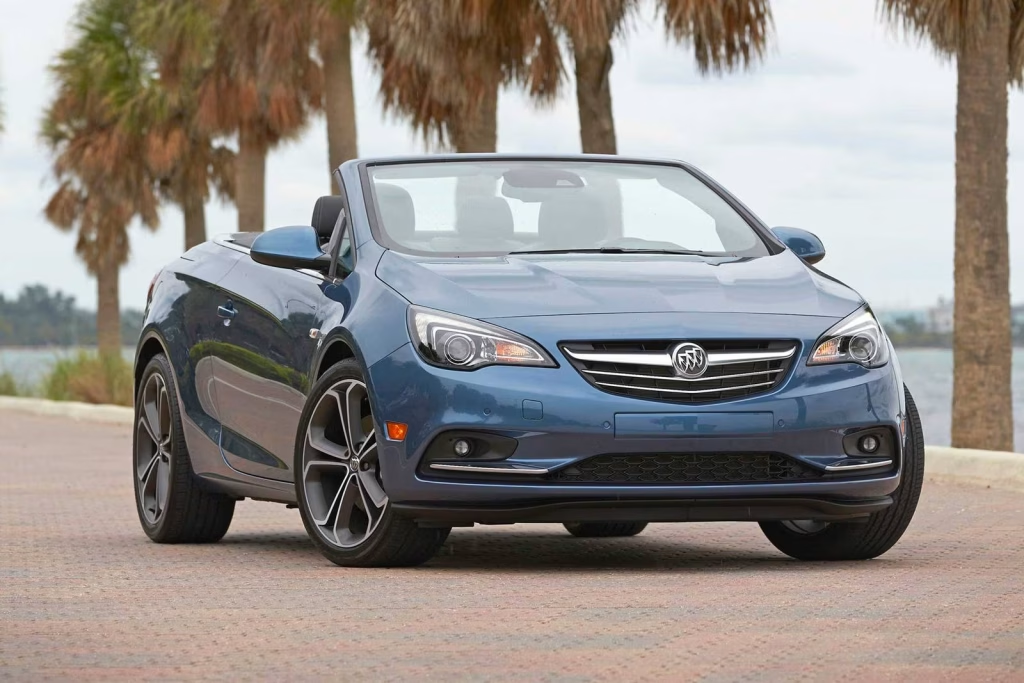
Paired with the vehicle’s soft suspension, this results in noticeable body roll during cornering. On the plus side, exterior noise is reasonably well managed for a convertible. Wind, road, and tire noise are average for the segment.
The brake pedal feels reassuring underfoot, but stopping distances are longer than expected. Overall, the Cascada is fine for leisurely cruising on smooth, open roads but struggles on winding terrain due to its body roll and uninspiring handling.
When viewed in isolation, the 2019 Buick Cascada might seem like a decent car. However, in comparison to its competitors, it quickly becomes clear that it falls behind. While its exterior styling is attractive, it doesn’t compensate for its shortcomings in other areas.
Performance and ride quality are average at best, and the automatic transmission behaves erratically, constantly requiring driver attention. This detracts from the smooth, relaxed ride one would expect from a luxury convertible.
Though the Cascada looks the part, the interior materials feel cheap, and the seats offer little comfort on long journeys. Altogether, these elements make the Cascada feel like an inferior imitation of better competitors, such as the Audi A3 Cabriolet.
The Cascada’s main advantage is its lower price compared to rivals. However, it also delivers less value overall. With the model likely nearing the end of its production life, this could be the final opportunity to purchase a new one.
Still, with better-equipped, more modern, and only slightly more expensive alternatives available, it’s difficult to justify choosing the Cascada.
If you are set on buying a 2019 Buick Cascada, the base 1SV trim is likely your best option. Priced at $33,995, it offers nearly the same features as the more expensive trims, including comparable performance, comfort, and infotainment options.
While the Premium trim provides slightly better driver-assistance features, its $3,000 higher price tag isn’t justified by the modest upgrades.
Comparing the 2019 Cascada with other convertibles highlights just how far it falls behind. The Ford Mustang Convertible in its EcoBoost variant is a more compelling option.
Starting at $31,895, it includes many modern features missing from the Buick, such as smartphone integration and a user-friendly infotainment interface. It also offers a powerful V8 engine with 460 horsepower and 420 lb-ft of torque, completely overshadowing the Cascada’s lackluster performance.
Although the Mustang’s interior is tighter, especially in the rear, it benefits from higher-quality materials and better overall design. In terms of performance, handling, interior quality, and value, the Mustang easily surpasses the Cascada.
Another strong alternative is the Audi A3 Convertible, which starts at around \$38,900—slightly higher than the Cascada. However, the extra investment pays off. Equipped with a 2.0-liter turbocharged four-cylinder engine and a seven-speed automatic transmission, the A3 delivers 184 horsepower and 221 lb-ft of torque.
Thanks to its lighter weight, it accelerates more briskly and handles far better than the Cascada. While the A3 doesn’t include a Wi-Fi hotspot like the Buick, it does offer popular and essential features such as smartphone integration.
Though its trunk is smaller, the cabin feels more spacious and significantly more luxurious. Overall, the Audi A3 represents a superior option in almost every way, making it a much smarter choice than the aging Cascada.
2022 Fiat 500X
The 2022 Fiat 500X managed to avoid finishing last in the 2022 affordable subcompact SUV rankings — but just barely.
There are a few areas where the 500X shines. Its unique, retro-inspired styling is sure to attract buyers looking for a vehicle with character. Inside, the cabin stands out for its attractive layout and upscale materials.
Still, this small SUV falls short in several key aspects important to SUV shoppers. The rear seats are tight on space, and cargo capacity is noticeably smaller than that of most competitors.
Additionally, the firm ride can lead to an uncomfortable driving experience, especially on rough roads. Fiat ultimately discontinued the 500X after the 2023 model year.
The 2022 Fiat 500X is the only model Fiat continues to sell in the United States, and while that may seem unusual, the decision makes some sense.
Over the past decade, American car buyers have increasingly favored SUVs, and the 500X allows Fiat to maintain a small foothold in the U.S. market with a vehicle that aligns with those preferences.
As an extra-small SUV, the 500X stands out for its distinctive Italian styling, standard all-wheel drive, and a well-made interior that gives it a more premium feel than some rivals in the same class.
However, despite these strengths, the 500X struggles to keep up with the competition in several key areas.
One of its most notable shortcomings is its underpowered engine, which makes it feel sluggish compared to other vehicles in the subcompact SUV segment. Additionally, its limited cargo and passenger space call into question its SUV credentials.
The small touchscreen can be frustrating to use, and while the vehicle offers a number of driver-assistance features, many don’t work particularly well. These issues are especially disappointing given the 500X’s relatively high starting price.

For 2022, the 500X sees a few updates, including the replacement of the Trekking Plus trim with a new Trekking Value Plus package and minor adjustments to available features.
Despite these changes, the 500X remains part of the first generation that was introduced back in 2016, which makes it feel somewhat dated when compared to newer, more refined rivals.
Competitors such as the Honda HR-V and Hyundai Venue offer more standard features at similar trim levels, and the Kia Seltos provides better interior space and cargo room.
While the Fiat 500X’s unique look and standard AWD might appeal to some, its limitations in performance, practicality, and technology may leave many shoppers looking elsewhere.
2022 Toyota C-HR
The Toyota C-HR made its debut for the 2018 model year and concluded its production run with the 2022 version.
The 2022 C-HR offers some notable advantages. It comes well-equipped with standard safety features, including blind-spot monitoring, adaptive cruise control, lane-departure warning, and automatic emergency braking. In addition, its infotainment system is intuitive and user-friendly.
However, those positives aren’t enough to offset its significant drawbacks. The rear seats are tight on space, and the cargo capacity falls short compared to other subcompact SUVs. Most critically, the engine underwhelms with sluggish acceleration and a loud, unrefined performance.
After a four-year absence, the Toyota C-HR has returned with a bold new design and an all-electric powertrain. This updated version positions itself as a subcompact alternative to the recently redesigned Toyota bZ, with which it shares its underlying platform.
Beneath its sharply sculpted exterior, the new C-HR houses two electric motors—one powering the front wheels and the other the rear—providing standard all-wheel drive and delivering a combined output of 338 horsepower.
Power comes from a sizable 74.7-kWh battery pack, and Toyota estimates the C-HR will be capable of traveling 290 miles on a full charge.
Charging is handled via an NACS charging port, giving it access to Tesla Superchargers. If the C-HR’s real-world performance aligns with these figures, it could stand out as a class leader in both power and range.
This isn’t the first time the C-HR name has appeared in U.S. showrooms; a gasoline-powered version was available from 2018 through 2022.
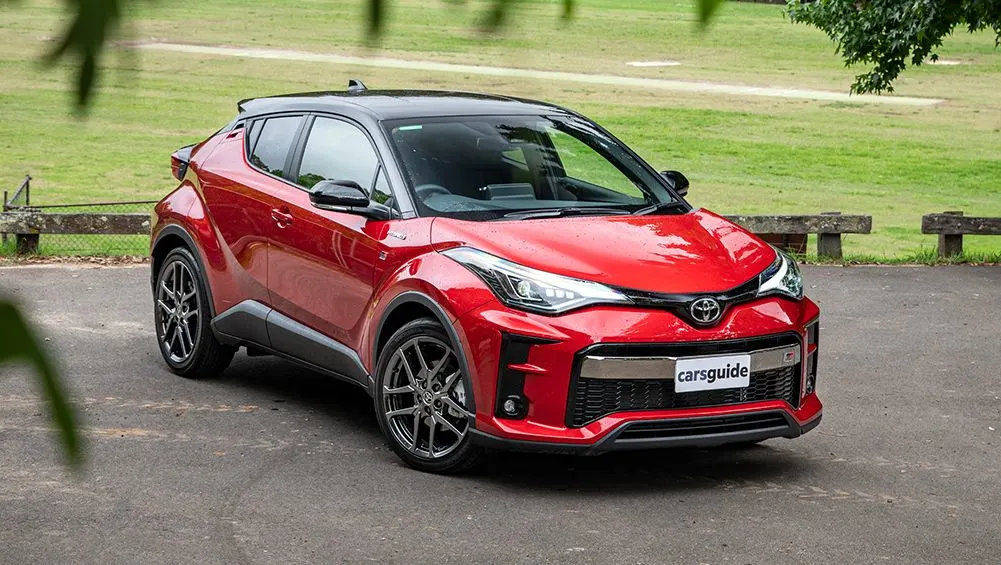
However, the 2026 model marks a new generation, now featuring a fully electric drivetrain. Built on Toyota’s e-TNGA platform—the same one underpinning the updated Toyota bZ compact electric crossover—the C-HR will serve as the smaller sibling in the lineup.
The pricing for the 2026 Toyota C-HR is projected to begin at approximately $35,000 and reach up to $38,000, depending on trim level and optional features.
Although Toyota has not yet provided official pricing, the C-HR will be available in two trims: SE and XSE. Both variants will come well-equipped, offering features such as heated front seats, a heated steering wheel, a power liftgate, a 14.0-inch infotainment touchscreen, and dual wireless phone chargers.
The XSE trim enhances the SE’s standard package by including larger 20-inch wheels, synthetic suede-trimmed seats, an eight-way power passenger seat, lane change assist, and the availability of two-tone exterior paint.
Under the hood—or rather, under the floor—are the C-HR’s dual electric motors mounted on the front and rear axles, creating an all-wheel-drive system.
The combined power output of 338 horsepower is particularly impressive for a subcompact crossover. This figure surpasses the top-end horsepower of both the Hyundai Kona Electric and the Kia Niro EV by 137 horsepower.
This robust setup promises swift acceleration and lively performance. We’ll provide a more complete evaluation once we have the opportunity to drive the C-HR and assess its capabilities firsthand.

